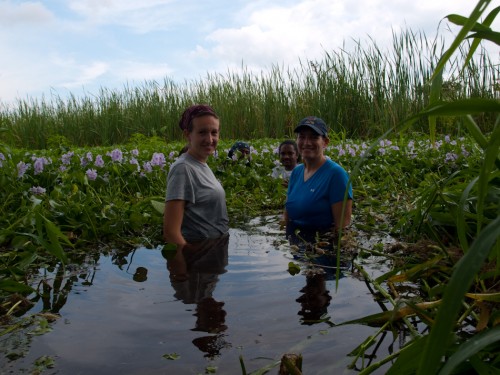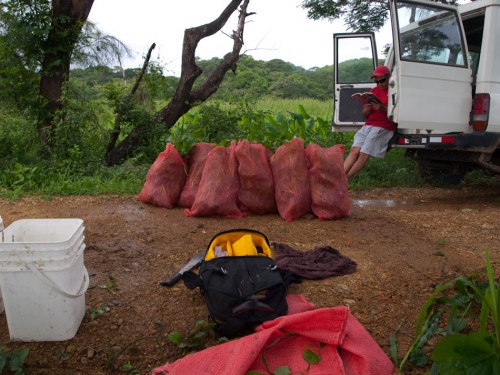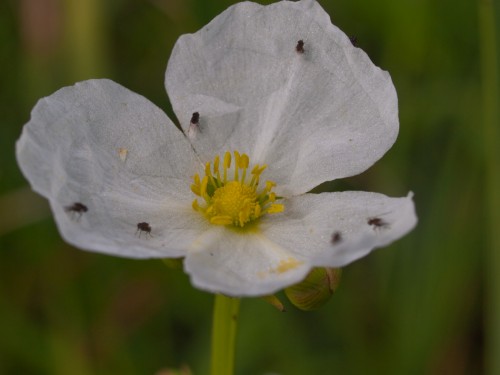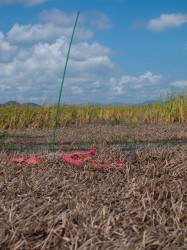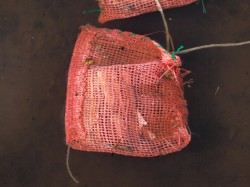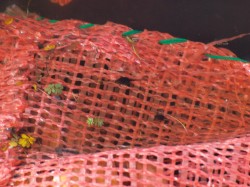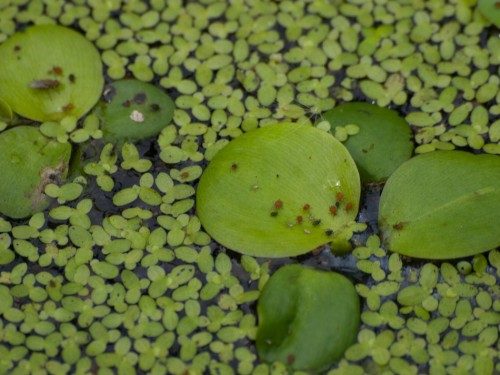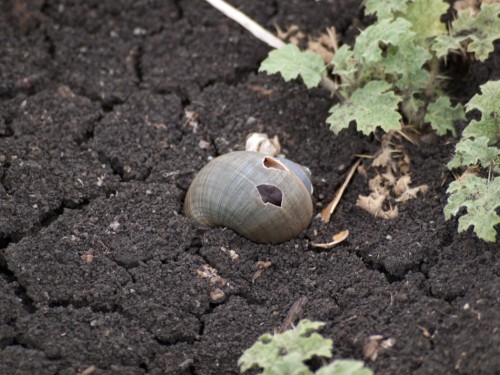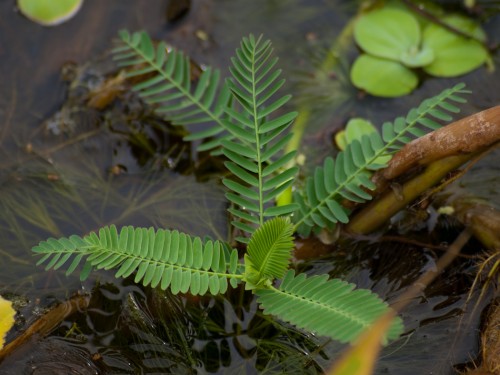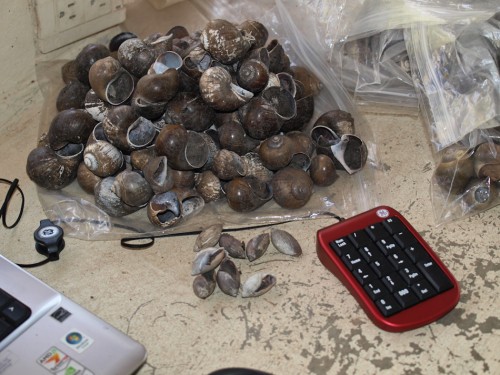Yesterday, I had the greatly appreciated help of several individuals that came along with the Tropical Biology OTS course. Pictured in the foreground are Abbie and Amanda, and in the background, Justin and Stevland. Not pictured is Mo Donnelly.
They fearlessly helped collect living Eichhornia at the crocodile-infested waters at the Catalina sector wetland for placement in competition enclosures in Palo Verde. The bags full of hyacinth are shown in the other picture.

